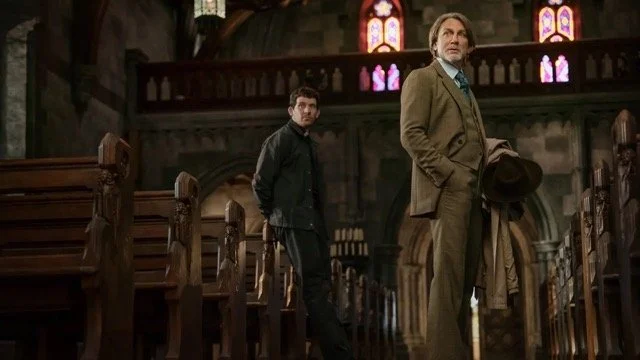The Big Heat Offers No Comfort
You may think that you’ve seen this all before: a cop decides to confront a city’s corruption, only to end up with his family threatened. But instead of backing down, he becomes manic, tossing aside all semblance of law and order to enact his view of justice on the crooked. But as he stares nakedly into the abyss of vengeance, will he be able to pull himself back from the edge?
It’s as familiar a setup as they come for film noir, but that doesn’t mean Fritz Lang’s The Big Heat offers anything like comfort. The Big Heat stands above most movies in the steadfast genre of noir by emphasizing two things: real character and real nastiness.
Glenn Ford’s Sergeant Dave Bannion is an earnest detective, not naïve, but not embittered. He’s aware of the corruption around him and he kicks against it, but he’s given little reason to push too hard. But after an ex-cop commits suicide and leaves a trail that points to a criminal hand in the whole affair, Bannion tumbles in too deep, resulting in his wife’s murder.
Now, of course, nothing will stop Bannion from craving revenge. Stir in a wimpish police captain, a seductive woman, various sadistic henchmen, and the arrogant crook behind it all, and you’ve got a classic noir cocktail.
The first taste of sheer cruelty of The Big Heat is an indication that this film is going to be different, however. The violence here is felt—the shots and explosions have more weight than in many other films of its era (or ours, for that matter). A woman is briefly attacked at a bar and she screams, not theatrically, but in a freaked out manner of someone confronted with unanticipated brutality. It’s a small moment, but it causes the audience to tremble, a little unsure of their footing. People are knocked off all the time in noir: they are shot and they pose, frozen in time, before quietly crumpling. But to witness real pain is a rare thing, it invades the viewers’ comfort.
But that nastiness is made potent by the strength of the characters. There are archetypes at every turn here, but everyone feels more colorful and more existent than so many others that cast these shadows. Bannion is a bit cynical and a lot brazen, but he’s also playful and genuinely affectionate. Ford alternates warmth and steel. He’s not the calm, assured presence of Bogart (or the foolishly assured personality that would find itself undone in one of Billy Wilder’s tales). His wife (Jocelyn Brando) is, to be sure, fulfills the assumed role of housewife, but she sips his beer and puffs on his cigarette with a familiar gesture that speaks to years of cultivated habits in their marriage.
The most memorable character is the main henchman’s girlfriend, Debby (Gloria Grahame). Again, it’d be easy for Debby to be a cardboard cutout of every other femme fatale, but she has real substance. From the start, Debby makes it clear that she’s aware of the games the gangsters are playing, and she wants little to do with them. She’d rather loudly drink and scoff at their impotence as they leap to obey their boss’ every command. That is to say, she’s fun and fully lived, refusing to become a mere object for these cruel men. Debby’s also given a real arc, even as it eventually succumbs to a fixation on her allure.
Fritz Lang’s work in Hollywood will always live in the shadow of his earlier German films—the impenetrable Metropolis, M, and Mabuse films—but The Big Heat is an exemplar of noir. It doesn’t unravel any surprising narrative twist, but it bears an emotional force that dislodges the viewer from the comforts of genre. It’s worth staring into The Big Heat’s abyss. Just make sure you can step back from the edge at the end.



